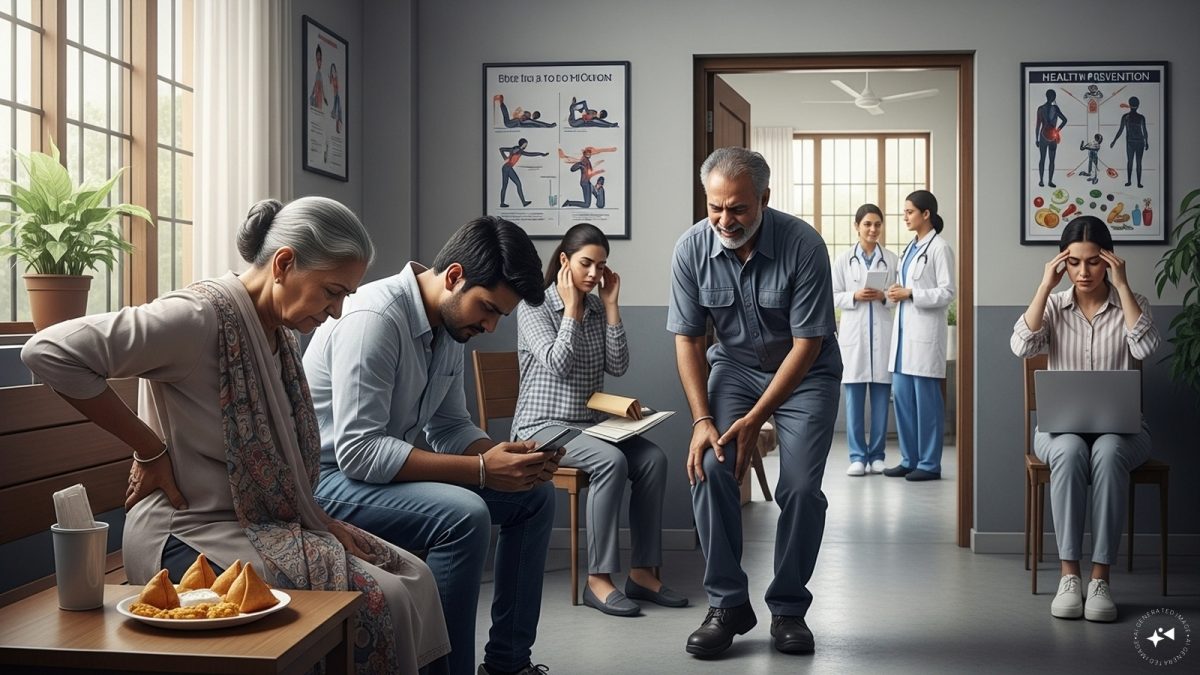Orthopedic health has become a growing concern in India not just for the elderly but increasingly for young adults burdened by sedentary lifestyles and long hours of desk work.
According to the Indian Council of Medical Research (ICMR), musculoskeletal disorders like arthritis, osteoporosis, and chronic back pain are on the rise, affecting both quality of life and productivity. Alarmingly, early-onset arthritis, spinal issues and lifestyle-related orthopedic conditions are now being reported in people as young as their late 20s and 30s.
At the same time, orthopedic surgeries such as joint replacements, fracture fixations, and spine operations are also expanding rapidly, but infection rates continue to pose challenges across many hospitals. With shifts in diet, declining physical activity, obesity and vitamin deficiencies, experts warn of a looming bone health crisis in the country if preventive measures are ignored.
Firstpost talked to Dr. Mahesh Kulkarni, Senior Consultant and Joint Replacement Surgeon at Deenanath Mangeshkar Hospital (Pune) about the most prevalent orthopedic conditions today, the emerging trends among young adults and the precautions and treatments that can help patients maintain joint and spine health.
Most common orthopedic conditions today
Dr. Kulkarni: The most common conditions we see today are arthritis, fractures, and osteoporosis. Arthritis is becoming more common due to aging, obesity, sedentary lifestyles, and in some cases, genetic factors. The wear and tear of joints over time is also a natural contributor. Fractures occur across all age groups, often because of accidents, falls, or weak bones. In older adults, even a minor fall can cause serious fractures. Osteoporosis is often called a “silent disease” because it weakens bones gradually without obvious symptoms. It usually develops due to lack of calcium and vitamin D, hormonal changes (especially in post-menopausal women), or long-term unhealthy lifestyle habits.
Early onset of joint and spine problems in young adults, sedentary lifestyle impact
Dr. Kulkarni: Yes, absolutely. We are seeing a growing number of young adults, even in their 20s and 30s, coming to us with persistent back pain, neck pain, and joint issues. This is directly related to the way modern lifestyles have evolved. Many jobs now involve long hours of sitting in front of a screen, very little physical movement, and poor posture. Add to those long commutes, lack of regular exercise, and increasing stress levels, and you have the perfect recipe for spine and joint problems. This is worrying, because problems that start early can worsen with time if not addressed. The good news is that these issues are preventable through better posture, regular stretching, staying active, and maintaining a healthy weight. Moreover, when conservative treatments aren’t sufficient, we now have access to advanced minimally invasive spine technologies that can address these problems with smaller incisions and faster recovery times.
High infection rates in orthopedic surgeries. Why is this happening and how can it be reduced?
Dr. Kulkarni: The high infection rates can be attributed to several key factors. Metal implants and foreign materials used in orthopedic procedures present a heightened risk for surgical site infections. The presence of these implants creates surfaces where bacteria can adhere and form biofilms, making infections particularly challenging to treat. Another significant challenge is that many infections don’t manifest until days or weeks after discharge, and India currently lacks a comprehensive post-operative surveillance system to track these late-onset instances.
However, we can significantly reduce these rates through multiple strategies. Modern surgical techniques, including robotic -assisted surgeries, enable less invasive procedures with smaller incisions, substantially lowering surgical site infection rates. We’re also seeing excellent results with antimicrobial surface technologies on implants, advanced instrument sterilization systems, and improved operating room protocols including positive air pressure environments. This comprehensive approach, combined with stringent surgical procedures and enhanced patient education about wound care and warning signs, can dramatically reduce post-operative infections to rates well below 2%.
Post-surgery risks, infections and importance of follow-up.
Dr. Kulkarni: Post-surgical follow-up is absolutely critical for patient safety and optimal outcomes. While some infections may manifest within the first 48-72 hours, many develop days or even weeks later, particularly deep tissue or implant-related infections that can take 2-4 weeks to surface.
We typically schedule structured follow-ups at specific intervals: first at 10-14 days for wound assessment, then at 6 weeks, and 3 months post-surgery. Regular follow-up ensures that early warning signs such as persistent pain, redness, swelling, warmth, discharge, or fever are identified promptly. This enables immediate intervention with appropriate antibiotics or surgical debridement, preventing minor infections from progressing to serious complications like osteomyelitis or implant failure.
Impact Shorts
More ShortsWe’re also increasingly utilising digital patient monitoring platforms and mobile health applications that allow patients to report symptoms and share wound photos remotely, enabling earlier detection of potential complications. Equally important is educating patients about red-flag symptoms and establishing clear communication channels for urgent concerns between scheduled visits.
Equally important is educating patients about red-flag symptoms and establishing clear communication channels for urgent concerns between scheduled visits.
Can obesity or diabetes increase the risk of orthopedic complications?
Dr. Kulkarni: Yes. Obesity puts extra pressure on weight-bearing joints like the knees and hips, leading to faster wear and tear. Diabetes, on the other hand, affects healing capacity. After a fracture or surgery, patients with uncontrolled diabetes often take longer to recover, and they face a higher risk of infection. Combined, these conditions can complicate even routine orthopedic treatments. That’s why it’s so important for patients to manage their weight and blood sugar levels, not just for general health but also to protect their bones and joints.
How does calcium or vitamin D deficiency contribute to orthopedic problems?
Dr. Kulkarni: Calcium and vitamin D are the building blocks of strong bones. Calcium gives bones their strength, while vitamin D helps the body absorb calcium effectively. Without them, bones slowly weaken, becoming more fragile and prone to fractures. Children with poor vitamin D levels may develop bone deformities, while adults risk conditions like osteoporosis.
Gym and exercise precautions to avoid injuries
Dr. Kulkarni:
The first step is always to warm up properly, because cold muscles and joints are more likely to get injured.
Secondly, it is important to use the correct posture and technique for every exercise.
Lifting weights that are too heavy or copying exercises without guidance can cause serious harm.
Rest is just as important—muscles and joints need time to recover between sessions.
And finally, people should listen to their bodies. If pain continues beyond normal muscle soreness, it’s a signal to stop and seek medical advice. Injuries ignored in the short term can become chronic problems later. When injuries do occur, early intervention with advanced imaging like 3D MRI and precision treatment options can prevent minor issues from becoming chronic problems that require extensive reconstruction later.
Cases of early-onset arthritis, slip disc or back pain in young professionals. What are the main causes behind this trend?
Dr. Kulkarni: Yes, unfortunately we are seeing a noticeable increase in these conditions among younger patients. While early arthritis and slip discs is mostly seen in people above 50, however now people under 35 are also facing joint related issues. The main causes are sedentary work routines, poor posture, long hours on laptops or phones, lack of physical activity, and high stress levels. Unlike earlier generations, today’s young professionals spend much of their time sitting, which is harmful for both joints and the spine. Fortunately, when these conditions require intervention, we now have access to motion-preserving spine technologies and minimally invasive joint preservation techniques that allow young patients to return to their active lifestyles much faster than traditional approaches.
Self-diagnosis risks and when to consult a specialist
Dr. Kulkarni: Self-diagnosis can be very risky. Not all back or joint pain has the same cause, and wrong exercises or treatments can worsen the problem. It’s best to see a specialist if:
Pain lasts more than a week.
It interferes with daily activities.
There is swelling, numbness, or weakness.
Pain keeps recurring.
A doctor can identify the exact cause using advanced diagnostic tools like high-resolution imaging and biomechanical analysis, and guide the right treatment, from conservative management to precision surgical techniques when necessary.


)

)
)
)
)
)
)
)
)



